Here’s the simple truth: you can buy a greenhouse worth of nutrition for the price of a bus fare. Garden cress isn’t flashy, but it’s one of the cheapest ways to boost vitamin K, vitamin C, and plant compounds you usually only hear about in pricey capsules. This guide shows what it actually does for your body, how to use it safely, and how to grow a fresh supply on a windowsill that barely sees the sun (yes, even in a cloudy Edinburgh flat).
- TL;DR: Cress (Lepidium sativum) is a cruciferous microgreen rich in vitamin K, vitamin C, and glucosinolates; it behaves like a natural supplement for bone, immune, and metabolic health.
- Best daily use: 20-50 g fresh sprouts/microgreens or 1-2 tsp seeds (5-10 g). Keep doses steady if you take warfarin.
- Evidence hints at improved iron status and modest reductions in fasting glucose and LDL, but effects are small-to-moderate and need bigger trials.
- Safety: watch warfarin (vitamin K), thyroid issues (goitrogens), pregnancy (avoid high seed doses), and food safety with raw sprouts.
- Quick win: grow a tray on the windowsill in 5-7 days; add by the handful to eggs, soups, sandwiches, and grain bowls.
What It Does and Who It’s For
Call it garden cress (Lepidium sativum), halim/aliv (in South Asia), or just “cress.” It’s a fast-growing crucifer (same family as broccoli and mustard) that people use as microgreens or seeds. Don’t confuse it with watercress-they’re cousins, not twins. Garden cress has a peppery bite, grows fast indoors, and packs a nutrient profile that looks like a supplement label.
What’s inside? A lot for something you can snip with scissors. Vitamin K for bones, vitamin C for immune support, folate, potassium, and phytochemicals like glucosinolates that your body converts into isothiocyanates (notably benzyl isothiocyanate). Those plant compounds are the reason crucifers get attention for cell protection and detox pathways in the liver.
Here’s a nutrition snapshot based on standard food composition data (USDA FoodData Central; values vary by variety, soil, and harvest stage):
| Nutrient | Garden cress, raw (100 g) | Garden cress seeds (~1 tbsp / 10 g) | Notes |
|---|---|---|---|
| Energy | ≈ 32 kcal | ≈ 50-55 kcal | Seeds are energy-dense |
| Protein | ≈ 2.6 g | ≈ 2.0-2.5 g | Seeds slightly higher per gram |
| Fiber | ≈ 1-2 g | ≈ 1-2 g | Seeds contain mucilage (gel-forming fiber) |
| Vitamin K | ≈ 500+ µg | Trace | Microgreens are the vitamin K powerhouse |
| Vitamin C | ≈ 60-70 mg | Low | Fresh greens win |
| Vitamin A (RAE) | ≈ 300-400 µg | Low | Carotenoids concentrated in greens |
| Folate | ≈ 70-90 µg | Low-moderate | Good daily top-up |
| Calcium | ≈ 80-90 mg | ≈ 60-80 mg | Seeds contribute, but watch portion size |
| Iron | ≈ 1-2 mg | ≈ 1-2 mg | Add vitamin C or lemon to boost absorption |
| Potassium | ≈ 500-600 mg | ≈ 60-80 mg | Greens supply more potassium |
| Alpha-linolenic acid (ALA) | Small | ≈ 0.8-1.5 g | Seed oil is naturally ALA-rich |
What does that mean in real life?
- Bone support: Vitamin K helps activate proteins that lock calcium into bone. NHS and NIH guidance both point to vitamin K as essential for normal blood clotting and bone metabolism.
- Immune and skin support: Vitamin C in a handful of cress can hit most of your daily needs, depending on the portion.
- Metabolic nudge: Small human trials with Lepidium sativum seeds have shown modest drops in fasting glucose and LDL cholesterol in adults with type 2 diabetes over 8-12 weeks. These were small RCTs and pilot studies; the signal is promising, not definitive.
- Iron status: School- and college-based interventions in India using cress-seed snacks (laddu/chikki) reported notable rises in haemoglobin over 6-12 weeks in iron-deficient girls. Again: small studies, but practical and inexpensive.
- Cell protection: Cruciferous isothiocyanates like benzyl isothiocyanate support detox enzymes and have been studied for anti-inflammatory and anti-proliferative effects in cell and animal models. Useful, but not a cure for anything.
Who gets the most from adding cress?
- People who don’t eat many leafy greens (easy vitamin K and C win)
- Vegetarians/vegans who want a daily plant source of ALA (from seeds) and vitamin K (from greens)
- Anyone chasing affordable, fresh, low-effort nutrition
Set expectations: it’s food, not a miracle. Think of it as 5-10% improvements that add up when you also sleep, move, and eat well.

How to Use It: Forms, Doses, Timing, and Safety
Pick the form that matches your goal and routine. You don’t need to take everything below-choose one primary form and use it consistently.
| Form | What you get | Typical dose | Best for | Watch-outs |
|---|---|---|---|---|
| Fresh microgreens/sprouts | High vitamin K and C; glucosinolates | 20-50 g/day (a large handful) | Bone, immune, everyday health | Raw sprouts: food safety for vulnerable groups |
| Whole seeds (chewed/soaked) | Fiber, ALA, minerals | 1-2 tsp (5-10 g)/day | Metabolic support, satiety | Gas/bloating if ramped up too fast |
| Seed powder (culinary) | Convenient add-in to porridge/yoghurt | 1-3 g/day | Easy daily routine | Can taste peppery |
| Capsules/tablets | Standardised seed extract or powder | Follow label (often 500-1,000 mg) | Travel, convenience | Quality varies; check testing |
| Tea/infusion | Warm, mild laxation from mucilage | 1 tsp crushed seeds steeped 10 min | Cold days, light digestive support | Not a strong source of vitamins |
Simple dosing rules of thumb:
- Start small: 10-15 g microgreens or 1 tsp seeds daily for a week. If digestion is fine, move up.
- Consistency beats intensity: a handful most days > a giant pile once a week.
- With meals is fine. Add lemon or any vitamin C source to help iron uptake from plant foods.
- Hydrate if you use seeds-their gel-forming fiber needs water.
Smart combos (“stacks”) that make sense:
- Iron-rich plant meals + cress + lemon: better non-heme iron absorption.
- Iodised salt + crucifers: supports the thyroid while you enjoy goitrogen-containing veg.
- Yoghurt or kefir + cress seeds: fiber + live cultures = happy gut.
Safety and interactions (read this bit):
- Warfarin/anticoagulants: NHS guidance is to keep vitamin K intake consistent. Cress is very high in vitamin K. Don’t yo-yo your portions; talk to your clinician if you plan a change.
- Thyroid concerns: Like other crucifers, cress contains goitrogens. If you have thyroid disease or iodine deficiency, keep portions moderate and ensure you get iodine (iodised salt, sea fish, dairy).
- Pregnancy/breastfeeding: In traditional medicine, seeds can act as a mild uterine stimulant in high amounts. Food-level use of greens is fine; avoid high-dose seeds/extracts unless your midwife/doctor okays it.
- Kidney stones: Cress contains oxalates. If you’re prone to calcium-oxalate stones, keep portions moderate and drink water.
- Sprout safety: Raw sprouts can carry bacteria. If you’re pregnant, elderly, very young, or immunocompromised, use microgreens grown safely at home, rinse well, and consider lightly wilting/cooking.
- Allergies: Mustard-family sensitivity can show up as mouth tingling or rash-stop and reassess if that happens.
What does the research actually say?
- Type 2 diabetes: Small randomised and crossover trials using 1-2 teaspoons/day of seed powder for 8-12 weeks have shown modest reductions in fasting glucose, LDL, and triglycerides. Sample sizes were small (often n < 60). Good signal; needs larger trials.
- Anaemia: School-based interventions in India using daily cress-seed snacks improved haemoglobin and ferritin in iron-deficient adolescent girls over 2-3 months. Methods varied, but the results were practical and encouraging.
- Anti-inflammatory/antioxidant effects: Consistent in lab and animal studies with benzyl isothiocyanate; human data are limited.
- Nutrition data: Values commonly referenced from USDA FoodData Central; vitamin K content in cress microgreens is notably high.
If you like to check sources, look up Lepidium sativum trials on PubMed, nutrition values in USDA FoodData Central, and general vitamin K guidance from NHS or NIH Office of Dietary Supplements. For sprout hygiene, UK Food Standards Agency has clear guidance.

Grow, Buy, Cook: Your Practical Playbook
You’ve got three paths: grow it, buy it fresh, or buy it as a supplement. Here’s how to do each without wasting time or money.
Grow it (5-7 days, windowsill-friendly):
- Tray + medium: A shallow tray, a paper towel/cotton pad, or seedling mat. No fancy kit needed.
- Rinse the seeds: Quick rinse in cool water in a tea strainer.
- Sow thick: Sprinkle seeds evenly so they almost touch. They’ll gel-normal for cress.
- Mist, don’t flood: Spray until damp, not soggy.
- Cover 24 hours: A loose lid or another tray creates humidity and helps germination.
- Light from day 2: Windowsill light is enough in the UK. No direct scorching sun needed.
- Harvest at 3-6 cm: Scissor-cut at the base. Rinse gently, pat dry, eat fresh.
Food safety tips I follow at home in Edinburgh:
- Use clean trays and fresh water. Rinse daily and avoid standing water.
- If it smells off or looks slimy, compost it and start fresh. Seeds are cheap; your gut is not.
- For vulnerable people, lightly wilt cress in hot soup or a pan for 10-20 seconds.
Buy it (fresh or supplement):
- Fresh punnets: Usually 50p-£1 in UK supermarkets or greengrocers. Look for vivid green leaves and no yellowing.
- Seeds: A packet (£1-£3) grows multiple trays. Look for untreated, food-grade or organic seeds (Soil Association logo helps).
- Supplements: Typically £8-£20 per bottle in the UK. Choose brands with third-party testing (ISO 17025 labs), batch numbers, and clear ingredient amounts. Avoid “proprietary blends” that hide doses.
Store it right:
- Microgreens: Wrap in kitchen towel, pop into a vented tub in the fridge, eat within 3-4 days.
- Seeds: Keep dry and cool, away from heat and sunlight. A glass jar in the cupboard works.
- Powder/capsules: Seal tightly; check expiry dates.
How to use it without thinking too hard:
- Eggs: Fold a big handful of cress into scrambled eggs just before serving.
- Sandwiches and toasties: Layer it like lettuce for crunch and pepper.
- Soups: Scatter on tomato, pea, or potato soup at the table.
- Grain bowls: Mix with warm quinoa, olive oil, lemon, and toasted seeds.
- Yoghurt bowl: Stir 1 tsp crushed seeds into Greek yoghurt with honey and berries.
- Quick chutney: Blitz cress, coriander, lemon, green chilli, and a pinch of salt. Done.
Quick decision guide:
- If your goal is bone and immune support → prioritise fresh microgreens.
- If your goal is metabolic support or satiety → add 1-2 tsp seeds daily.
- If you travel a lot → use capsules or seed powder and keep the dose steady.
- If you’re on warfarin → don’t change your usual amount without telling your clinic.
Checklist: daily use done right
- Portion: 1 big handful microgreens or 1-2 tsp seeds.
- Pairing: add a squeeze of lemon; keep iodine in the diet.
- Hydration: extra glass of water with seeds.
- Consistency: same amount most days, especially if on anticoagulants.
- Storage: greens in fridge (3-4 days), seeds in a dry jar.
Mini‑FAQ
Is cress better than a multivitamin?
Different tools. Cress gives you natural vitamin K, vitamin C, and phytochemicals that multis usually skip. A multivitamin adds breadth. Some people do both.
How fast will I notice anything?
Energy and satiety changes can show up in a week. Lab markers (like ferritin or fasting glucose) take 6-12 weeks and need a blood test.
Can kids have it?
Yes, as food. Chop microgreens finely. Avoid giving small children dry whole seeds to reduce choking risk.
Cress vs watercress?
Watercress is super high in peppery compounds and vitamin K too, but it’s a different plant. Garden cress is easier to grow at home and has its own nutrition profile.
Can I cook it?
Yes. A quick wilt softens the bite and improves safety. You’ll lose some vitamin C with heat, but not the minerals.
Next steps
- Pick one form (microgreens or seeds) and use it daily for 30 days.
- Note two metrics that matter to you (e.g., energy and digestion), and track them weekly.
- If you take warfarin or have thyroid disease, clear your plan with your clinician first and keep your intake steady.
Troubleshooting
- Gassy or bloated? Halve your seed dose and drink more water; build back slowly.
- Sprouts look slimy? Start a fresh tray with cleaner gear and less water. Consider lightly cooking.
- No taste for it? Blend into pesto with basil and nuts, or stir into warm grains where the bite mellows.
- On warfarin and your INR swings? Revert to your previous steady portion and call your anticoagulation clinic.
Bottom line: cress gives you a lot of the things people buy supplements for-on the cheap, and fresh. Keep the dose steady, respect the few safety edges, and make it a habit that sticks.


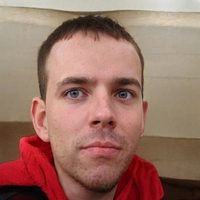
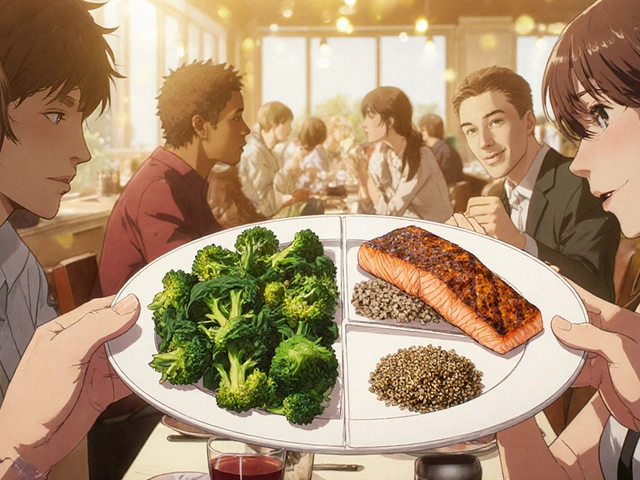

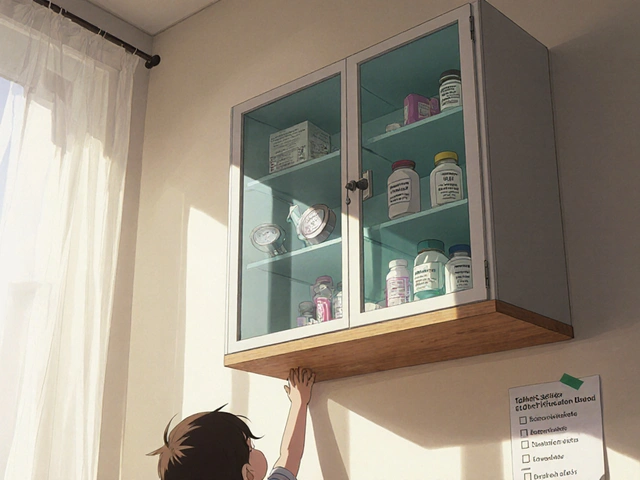
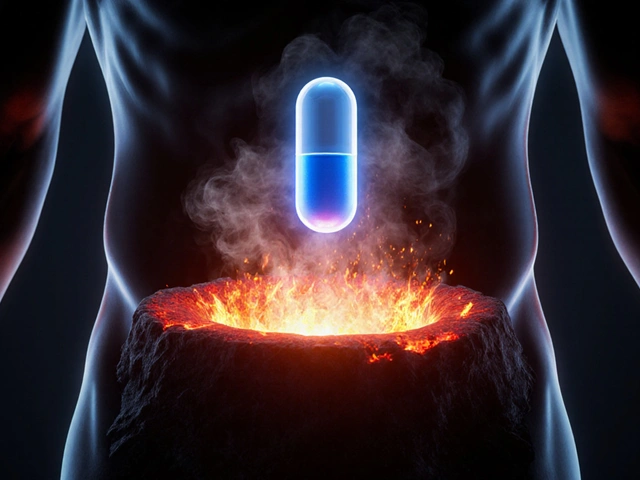
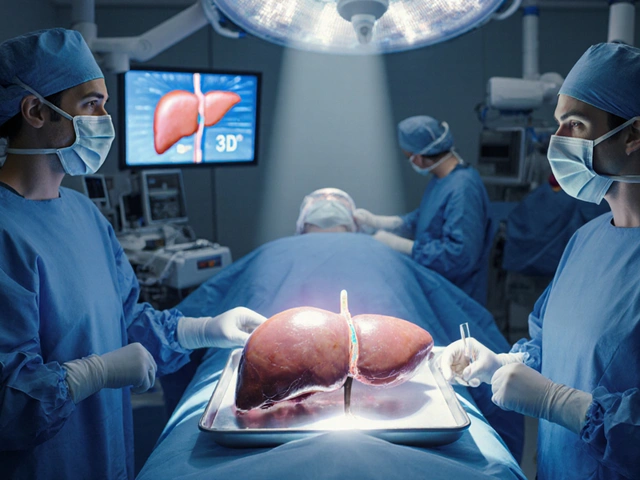
dayana rincon
August 30, 2025 AT 23:43So I just grew this on my windowsill and now my eggs taste like a spicy forest? 🌱🔥 I’m not mad. I’m impressed.
Also, my cat is obsessed. She keeps knocking over the tray. Worth it.
Charity Peters
August 31, 2025 AT 02:23Used it in my oatmeal. Tasted weird but my stomach feels fine. Will keep doing it.
Crystal Markowski
September 1, 2025 AT 00:24This is exactly the kind of simple, science-backed, low-cost habit that can genuinely improve long-term health without needing expensive supplements or drastic lifestyle changes.
Consistency matters more than quantity - and growing it yourself removes the cost barrier entirely. Well done on making this accessible.
For anyone overwhelmed by nutrition advice, start here. One handful a day. That’s it.
Sondra Johnson
September 2, 2025 AT 18:52Let’s be real - if you’re still buying kale at $8 a punnet while cress sits there like a humble green superhero for 50p, you’re not being frugal, you’re being performative.
Also, the way this thing grows in a soggy paper towel? That’s alchemy. That’s magic. That’s the kind of shit you tell your friends about at 2 a.m. when you’re high on chamomile and existential dread.
Also also - I put it in my smoothie. It didn’t ruin it. Shocking, I know.
Cindy Burgess
September 3, 2025 AT 07:47The nutritional data presented is methodologically sound and aligns with established food composition databases, particularly USDA FoodData Central. However, the extrapolation of clinical significance from small-scale pilot studies - particularly those with n < 60 - warrants caution. The effect sizes reported for glucose and LDL modulation are statistically marginal and lack robust replication in population-based cohorts. While the inclusion of traditional Indian interventions provides ethnographic value, generalizability to Western populations remains unestablished. Furthermore, the omission of confounding variables such as baseline dietary patterns, genetic polymorphisms in vitamin K metabolism, and microbiome variability limits the interpretive validity of the recommendations. A more rigorous meta-analytic synthesis is required before clinical guidelines can be substantiated.
Kelly Library Nook
September 4, 2025 AT 23:24Let me just say - the fact that you’re recommending raw sprouts to the general public without a single mention of Listeria monocytogenes risk thresholds or FDA sprout safety standards is irresponsible. You’ve given people permission to poison themselves under the guise of ‘affordable nutrition.’
Also, ‘rinse well’ is not a food safety protocol. It’s a cop-out.
And why are you promoting seed powder without specifying extraction methods or bioavailability metrics? This reads like a blog post written by someone who Googled ‘cruciferous benefits’ and called it a day.
MaKayla Ryan
September 5, 2025 AT 15:59USA spends billions on supplements while people grow this in a Tupperware lid and call it ‘health.’ You’re all just lazy and desperate for magic pills.
Grow your own food. Stop buying plastic-wrapped nonsense. This isn’t a ‘guide,’ it’s a wake-up call.
Faye Woesthuis
September 7, 2025 AT 01:53Anyone who thinks cress is a ‘miracle’ hasn’t seen what real superfoods do.
Also, you didn’t mention that this is basically just a mustard plant. You’re glorifying weeds.
Tressie Mitchell
September 8, 2025 AT 16:06How quaint. A guide on how to eat like a 19th-century peasant and call it ‘biohacking.’
Do you even know what real phytochemical research looks like? Benzyl isothiocyanate? Please. You’re quoting USDA tables like they’re peer-reviewed journals.
And you expect people to believe that a handful of cress can outperform a properly formulated NAC + sulforaphane complex? This isn’t nutrition. It’s performative austerity.
raja gopal
September 9, 2025 AT 15:19In India, we’ve used halim seeds for generations - in laddus, in chutneys, even in milk during winter. My grandmother said it kept the blood warm and the lungs clear.
Now science says the same thing? That’s beautiful.
Don’t overthink it. Just eat it. With love. And lemon.
Kevin Mustelier
September 10, 2025 AT 20:17So… you’re telling me that the same plant my great-grandma used to put in her soup - the one that made my mom say ‘ew’ - is now a ‘supplement’? 😏
And we’re supposed to be impressed because it grows on a windowsill?
Next you’ll tell me garlic is a nootropic.
...Actually, wait. It is. Never mind. Carry on.
Orion Rentals
September 11, 2025 AT 00:12The structural clarity of this guide, particularly the tabular comparison of nutrient profiles and the stratification of usage modalities by physiological outcome, represents a commendable synthesis of clinical nutrition principles and practical application. The emphasis on dose consistency in the context of anticoagulant therapy is especially prudent and aligns with current guidelines from the NHS and NIH. Furthermore, the inclusion of culturally relevant applications from South Asian dietary traditions enhances the guide’s ecological validity. This is not merely an informational resource - it is a model for evidence-informed public health communication.
Sarah Khan
September 12, 2025 AT 16:29There’s something profoundly human about the idea that the most potent medicine we have isn’t in a capsule or a lab - it’s growing in a cracked mug on a windowsill, waiting to be snipped with kitchen shears.
We’ve spent decades chasing complexity - expensive pills, obscure extracts, proprietary blends - while nature offered us a peppery green that grows faster than our excuses.
It’s not about replacing supplements. It’s about remembering that health isn’t a product you buy - it’s a habit you cultivate.
And maybe, just maybe, the reason we feel so empty isn’t because we lack vitamins - it’s because we’ve forgotten how to tend to the small, quiet things that keep us alive.
Grow it. Eat it. Don’t overthink it.
Let the cress do the work.
Samantha Stonebraker
September 14, 2025 AT 15:45I love how this guide doesn’t sell magic - it just says: here’s something real, here’s how to use it, here’s what to watch out for, and here’s how to make it part of your life without turning it into another chore.
That’s rare.
And to the people who say ‘it’s just a weed’ - maybe. But so was broccoli once. And so was kale. And now they’re in every smoothie.
Let people find their own version of this. No shame in starting small.
One handful. One teaspoon. One day at a time.
You don’t need to be perfect. You just need to show up.
Keith Avery
September 16, 2025 AT 09:46Actually, garden cress is Lepidium sativum, but you didn’t mention that its glucosinolate profile is wildly different from watercress (Nasturtium officinale) - which has higher isothiocyanate concentrations and better-studied anti-cancer effects in vivo.
You’re conflating two distinct species and misrepresenting the evidence.
Also, the USDA data you cited doesn’t account for seasonal variation in vitamin K content - which can vary by 300% depending on light exposure.
And why are you promoting seed powder without specifying particle size or enzymatic activation? The myrosinase enzyme degrades in powder form unless stabilized.
This guide is dangerously oversimplified.
Chelsey Gonzales
September 16, 2025 AT 18:58i just tried this and my breath smells like a forest that got into a fight with a hot pepper
but i feel weirdly alive??
also my dog licked the tray and i think he’s in love
10/10 would grow again
Kelly Yanke Deltener
September 16, 2025 AT 22:43You know what’s sad? People are celebrating a weed because they’re too broke to afford real food.
And you’re telling them it’s ‘empowering’.
It’s not empowerment - it’s resignation.
They should be able to afford kale, not have to scrape together cress from their windowsill like it’s some kind of virtue.
Stop glorifying poverty. Just say it: we live in a system that forces people to eat like this.
And you’re not helping - you’re just making them feel good about it.
Kevin Mustelier
September 18, 2025 AT 19:16Wait - you said ‘even in a cloudy Edinburgh flat’? 🤔
So… you’re basically saying ‘if you live in a place where the sun hides for 8 months, you can still be a nutrition guru’?
That’s the most British thing I’ve ever read.
Well played.
Now I’m gonna grow cress in my bathroom with a LED bulb and call it ‘biohacking.’
And I’ll charge $20 for the PDF.